During the early growth of the industrial revolution, the great steel snake spread rapidly to open up the country for access and trade. Railways were pivotal in connecting the nation. Where the railways went, towns prospered. They became the lifeblood between the country and the cities. Wool, coal, grain and milk were transported to markets in ways never before possible. They assisted in the development of primary industries, especially wheat growing and dairying.
The first railway line in Australia opened between Melbourne’s Flinders Street and Port Melbourne in 1854. It was when the country was little more than spread out colonies relying on coastal shipping services and horse-drawn carts for transport. The separate Australian colonies quickly developed their railway transport system. By the time of Federation in 1901, there were more than 20,000 kilometres of railways linking the new states. Several different gauges were used in each state. This meant a passenger travelling between Perth and Brisbane had to change trains six times. It is said that railways brought time to the country before clocks, watches, and radios were in everyday use. Steam locomotives were used until the 1900s and were completely phased out by World War II and replaced by diesel-electric locomotives.
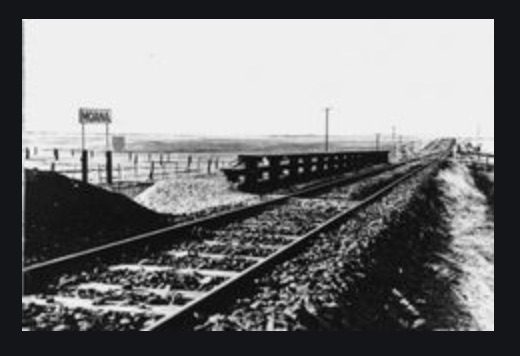
Australia has the sixth largest rail network in the world. The rail system moves 1.4 billion tonnes of freight, making it one of the best heavy haul systems in the world. The need for rail will persist for the movement of bulk freights such as iron ore and coal. But for other railways, over time, the ageing infrastructure and inability to carry loads to compete with road and air transport have led to their demise. Unless a railway is purpose-built (such as sugar cane railways), they usually can’t provide door to door service without double handling. They require large volumes to be efficient, and the seasonal and unpredictable nature of most harvests make it impossible for farmers to commit to a regular rail service.
Consequently, there a large number of abandoned and disused railway corridors around Australia. Many of them have been converted to rail trails for the exclusive user of walkers and bike riders. They make fantastic rides as they wind through open paddocks towards ranges on a relatively gentle grade.
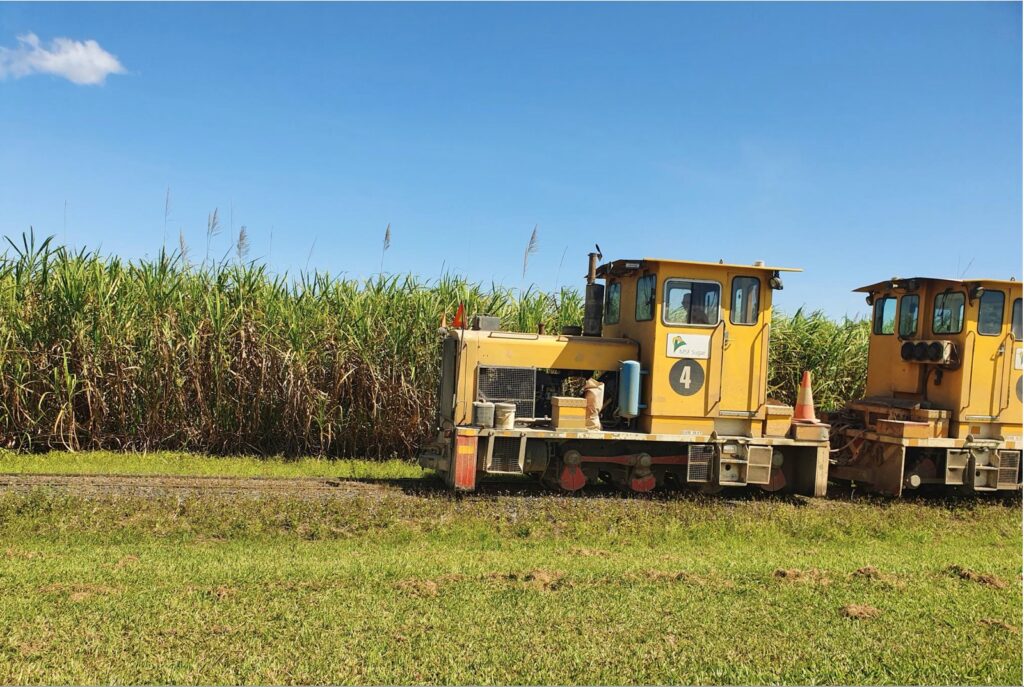
They provide what I call serenity, not the serenity Michael Caton referred to in the movie ‘The Castle’, but the remoteness away from competing traffic. You get an overwhelming sense of peace and tranquillity as you ride through an open box cutting, through a tunnel or on a large wooden trestle bridge over a creek crossing. All by yourself with the constant chatter of birds overhead. On these trails the old rails are removed, and bridge crossings improved, usually by removing the culvert or replacing it with a new concrete structure.[1]
Before we started our travels, we spent a couple of days at Esk in Queensland on our first rail trail experience. Starting from Ipswich, the Brisbane Valley Rail Trail follows the disused railway corridor for 162 kilometres to Yarraman, connecting towns and villages through hoop pine plantation forest, native forest and open farming country, climbing the Benarkin Range. We focused on the short distances either side of Esk and plan to ride the other sections at a later date.
Victoria has many disused railway corridors that have been converted to rail trails. When we first drove through Yea on our way to Melbourne, we stopped for lunch at the Gothic railway station (built in 1889) used as the town’s rail trailhead. The railway operated between 1883 and 1970. There was plenty of signage explaining the Great Victorian Rail Trail that ran 134 kilometres from Tallarook to Mansfield, with a spur to Alexandra from Cathkin. When we returned a month later, we rode the section east of Yea towards Mansfield. It is spectacular as you head uphill towards the Black Range to the Cheviot tunnel at McLoughlin’s Gap, the longest rail trail tunnel in Victoria. It was built in 1889 using 675,000 bricks handcrafted on-site. The descent from the tunnel to Molesworth on the beautiful Goulburn River is spectacular. The other advantage of being based in Yea for this section of the rail trial is that the town is a very popular stopover for Melbourne residents returning or going on holidays. It boasts many cafes and bakeries, one of which sells the best passionfruit vanilla slices you will ever taste!
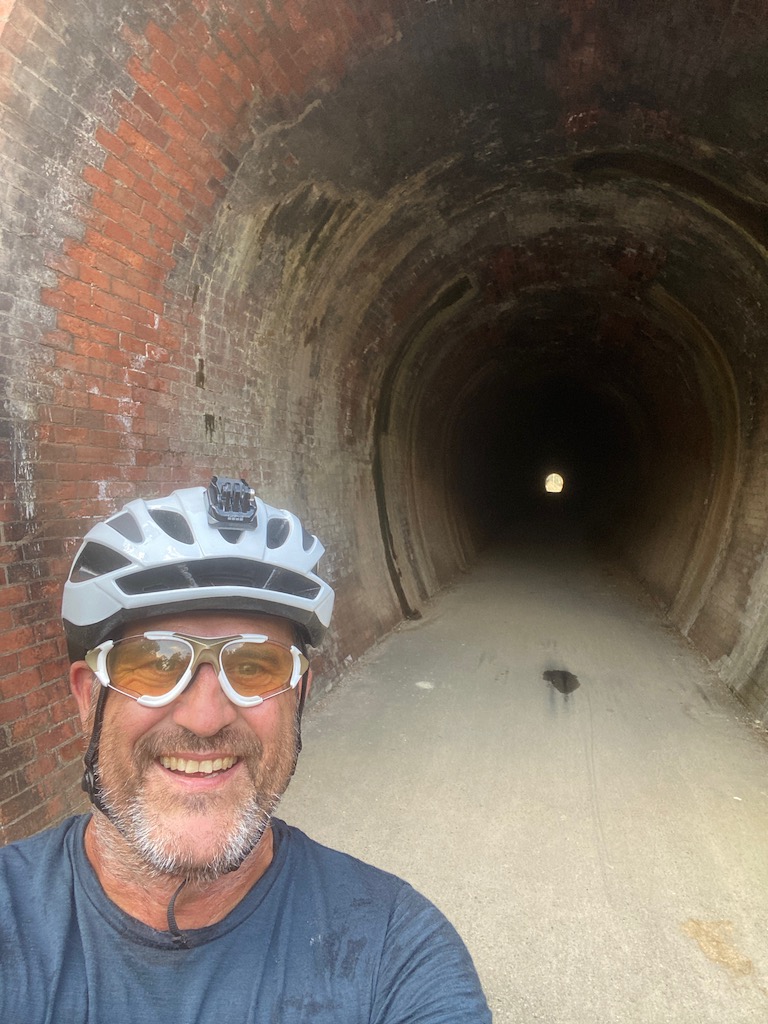
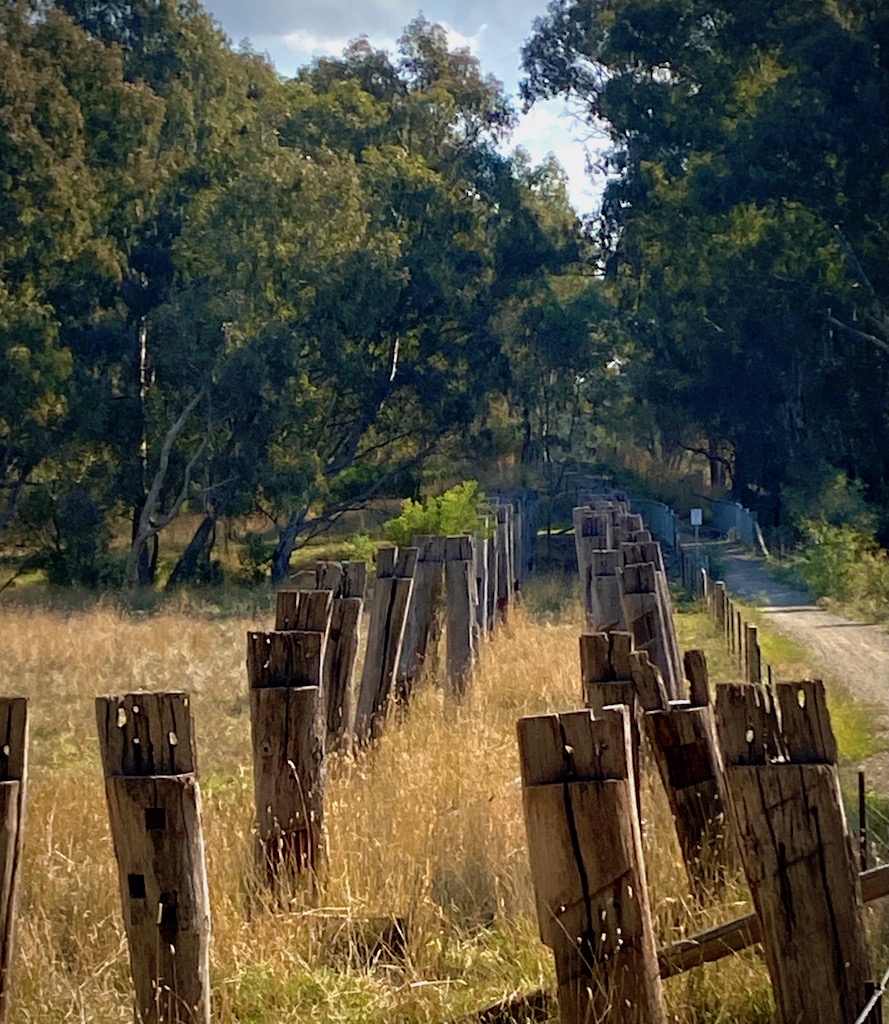
We spent a couple of weeks in north-east Victoria, staying in the tiny village of Everton. The Murray to Mountains Rail Trail is 116 kilometres from Wangaratta to Bright with offshoots to Beechworth, Wahgunyah and Oxley. The main part travels through the beautiful Ovens Valley. At Everton, there is the section to Beechworth, which sits at 600 metres above sea level. It is challenging uphill and easy downhill with the total 19 kilometres from Everton, all uphill. Even though it is at a relatively easy two per cent gradient most of the way, it was hard work for an out of shape bike rider like myself.[2] As I huffed and puffed towards Beechworth one morning, I tried to enjoy the scenery as I passed over large fills and box cuts through rolling countryside breathing in big gulps of fresh air. I rewarded myself with an excellent coffee and cake at one of the Beechworth cafes and later a gelato for extra strength just before leaving.
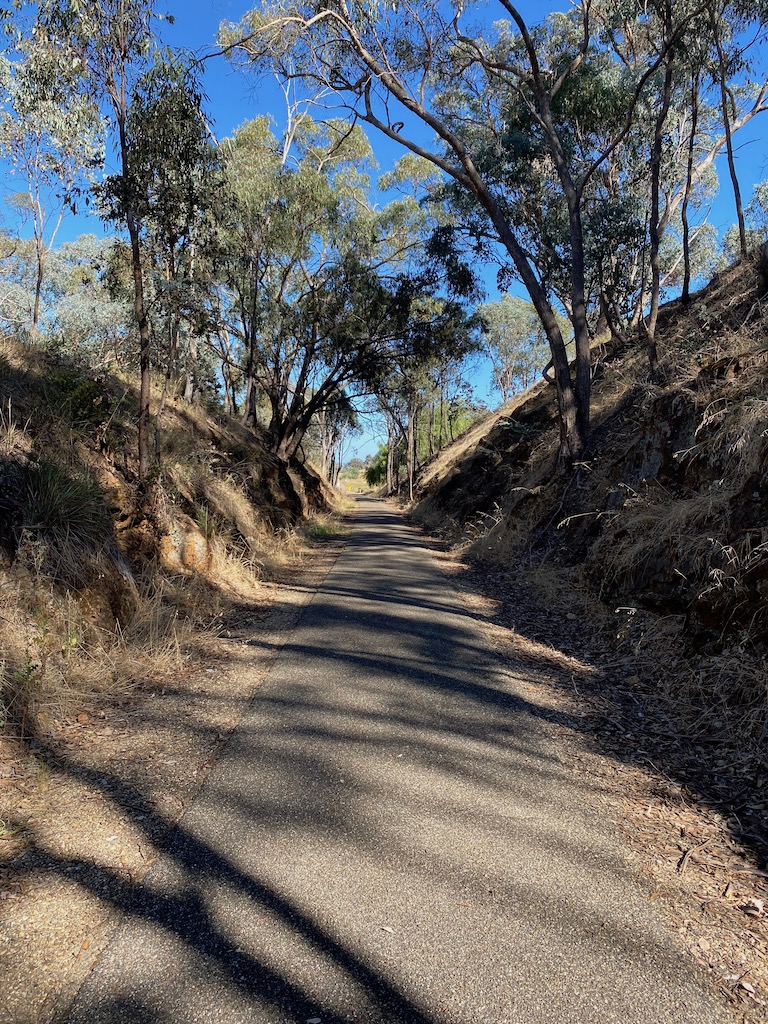
Closer to Melbourne, there is the ‘Warby Trail’ or the 40-kilometre Lilydale to Warburton Rail Trail. The train line ran from 1901 to 1965. It was built to transport farm produce and timber from the Yarra Valley to Melbourne. While staying at Lilydale, we rode the rail trail which starts at the end of the current metropolitan rail network. It has a backdrop of the Yarra Ranges National Park as it follows the Yarra River Valley. Most of the original station platforms are still present with replica signage, although many station buildings have been lost through time. The station building at Yarra Junction is the original building from Lilydale Station and is now a museum. The local council is extending the rail trail through to Yarra Glen for another 10 kilometres. Unfortunately, the impressive wooden bridges across the Yarra River flood plains on this new section were burnt in the 2009 fires. They were 500 metres long.
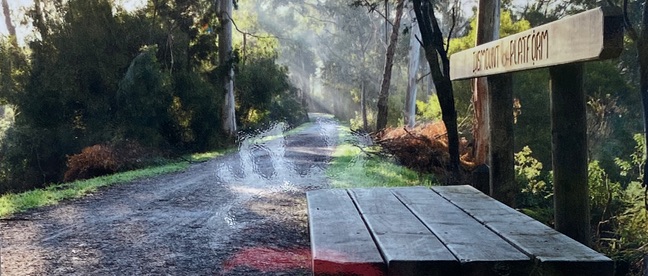
While we were house sitting at Heathcote we had the opportunity to ride the 50-kilometre O’Keefe Rail Trail between Heathcote and Bendigo. The railway was first built in 1888 and ran until 1956. It lay dormant until 1993 when it re-opened as a rail trail. We did an enjoyable section towards Lake Eppalock. The decision to dam the Campaspe and Caliban Rivers to build the lake as a water supply to farms and towns in the north of Victoria, in the late 1950s, confirmed the end of the railway – Lake Eppalock is the lake that sunk the rail. Lake Eppalock is the seventh largest lake in Victoria covering over 30,000 hectares and holding more than 300,000 megalitres when full. On the day we saw it, it was far from full. We could hardly see the water from the rail trial viewing point.
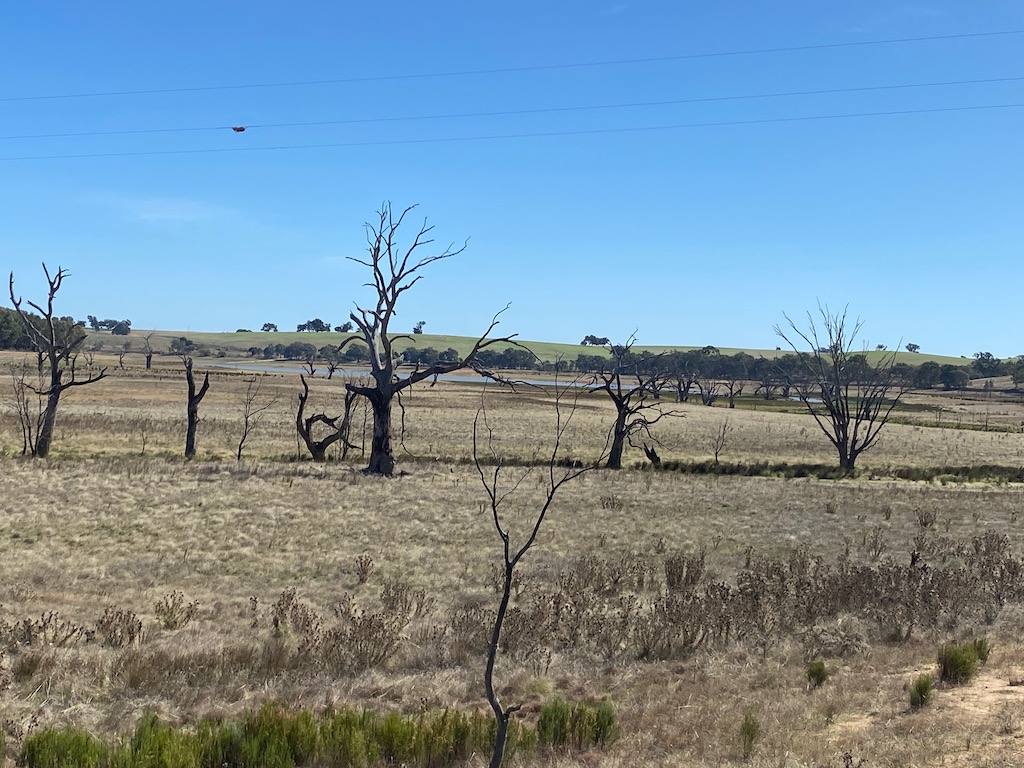
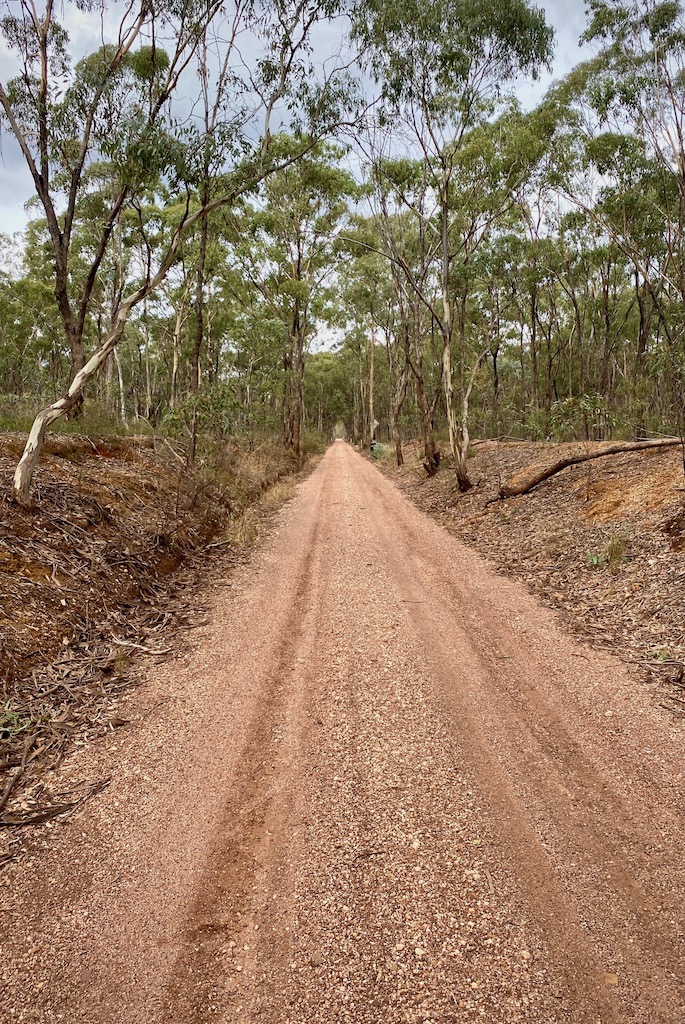
We hope to experience many more miles of rail trails as we continue our travels around the country.
Anyone recommend other rail trails?
[1] The limits on native forest harvesting these days means you cannot easily obtain the lengths of girders and stringers required for bridges using a renewable resource. Instead, we manufacture concrete replacements from non-renewable products using lots of cement, sand and energy to produce additional CO2 into the atmosphere.
[2] I had tackled much steeper gradients and longer rides on my road bike in north-west Tasmania and Queensland when I was much fitter doing more regular weekly mileage.
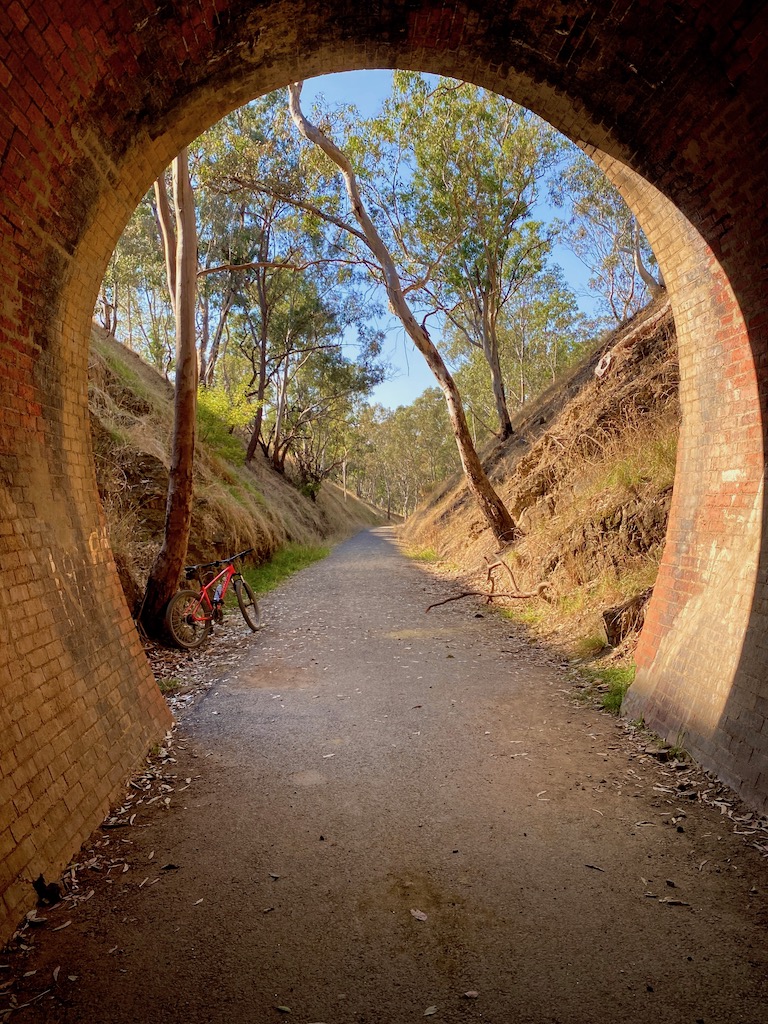
Beats bike riding on busy roads. great idea to travel with bikes. Exploring via cool bike routes keeps you fit & makes it all worthwhile! 👏🏽
What a great read Robert. When Craig and I were in Vic doing a motor home trial, we went to Bright and passed many many people from all ages cycling on that particular rail trail. Can’t wait till we can try some of them.
Great article. I like the comment in footnote No. 1……
Can’t wait to return to Oz and try out a bike trail. You make them all seem very interesting and scenic. It’ll have to be an easy one though for me. Continue to enjoy and write about your experiences so I can visualise. Thanks!
I really enjoyed this read Robert. (You are quite an accomplished story teller).
My husband and I have done a couple of these rail trails and are looking forward to doing more when we head off next year (lapping the map for a couple of years).
My husband went to school with Mark Plummer, the person instrumental in bringing Rail Trails to Victoria. Mark is now deceased. Mark was a huge rail enthusiast, as is my husband, and they had many adventures together chasing trains.
One story my husband and often relates is the two of them and another lad, all about 17yo going to Tassie for 2 weeks (no phones or real means of communication with mothers). They walked the railway from Strahan to Queenstown where they presented themselves to give a previously arranged talk on steam trains. It was quite a surprise when it was 3 teenage boys who showed up to give this talk – and three teenage boys who hadn’t showered for 2 weeks! Someone’s wife collared them and sent them through the shower!
In any case, there is a new rail trail in NE Victoria – Beechworth to Yackandandah. It’s nearly finished and scheduled to be completed before the end of this year (2021).
Thanks Sue. A nice story about your husband’s trip to Tasmania.